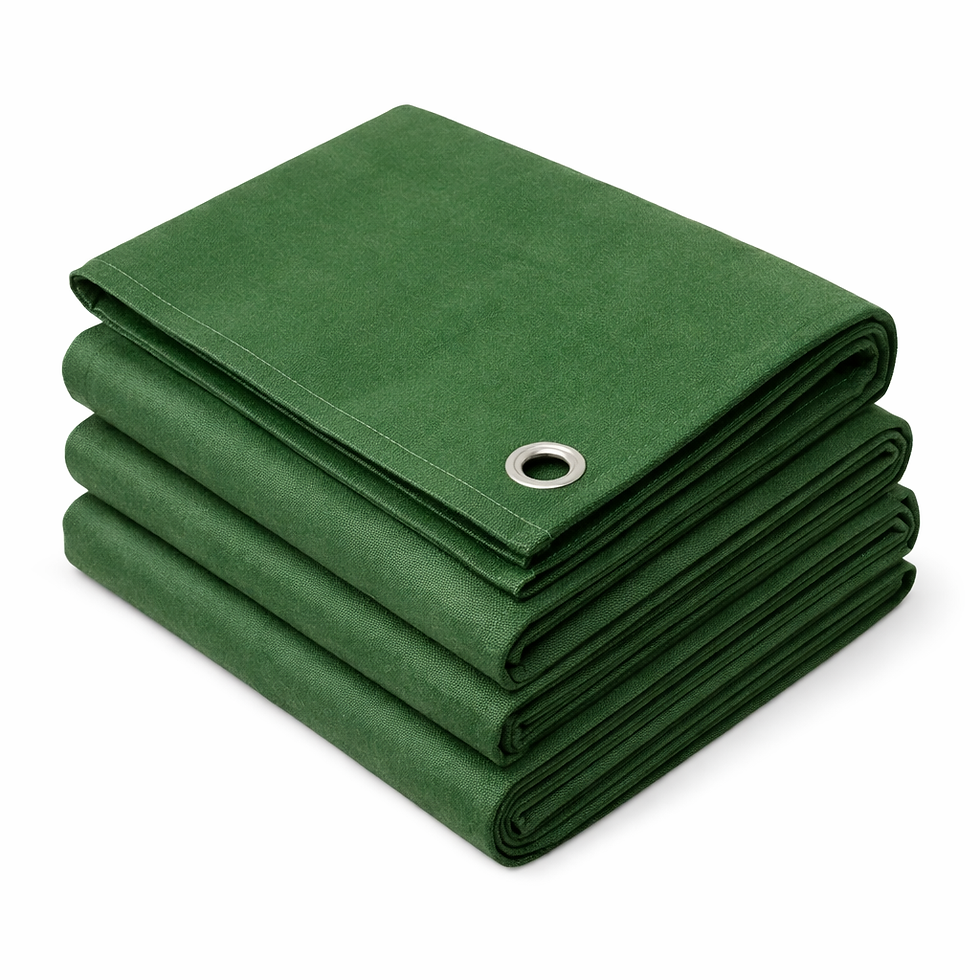Protect Your Air Conditioning Unit with a Tarpaulin Sheet
- Bradley Tomlinson

- May 12, 2022
- 2 min read
Updated: Aug 12, 2023
During the off-season, cover your air conditioning unit with a Tarpaulin to protect it from dust, insects, and moisture. An exposed air conditioner with dust accumulation can trap moisture and provide biological material for mold or mildew to thrive. Insects can enter the air conditioner, perish, and become lodged in the unit's tiny mechanisms. A waterproof tarp won't ensure that your air conditioning system will be completely protected, but it will enhance the chances that it will be exposed as if you had not protected it at all. You may also shield your air conditioning machine by draping a tarp over it. The tarp will create a cover for the air conditioner, allowing it to chill the air without having to work as hard. The efficiency gains will extend the life of your air conditioner. The tarp also shields the air conditioner from falling branches, leaves, and other material that might clog it and cause difficulties over time.
If heavy winds are forecast, a Canvas Tarpaulin or piece of plywood can be used to protect the outdoor unit's top from debris falling. Large hailstones are also protected by such a cover. Hurricane straps should be used to attach the condenser unit on high units. Build a protective framework around the air conditioner to protect it from thunderstorms and debris that blows into its sides. Branches and other debris are prevented from blowing into the inside of the device, causing damage, blockages, and performance concerns. Any building must be at least 24 inches away from the unit on both sides. Natural protection is also provided by shrubbery with robust root systems. There is no need to hide an outside unit just because it's raining; it's built to withstand the weather. Covers may be useful if flooding is forecast, but only if they are well sealed. Even if you used a cover, any air conditioning machine exposed to flood waters should be inspected by a professional before being used again. While lying in flood waters, parts may have been damaged, making the system risky to run without repairs. When a storm approaches, turn off the electricity to safeguard the outside air conditioning system from voltage spikes induced by nearby lightning strikes. This also avoids harm to the interior of the device if falling debris gets trapped there. Pre-cool your house to reduce discomfort during a power outage or if you switch off the electricity to preserve your air conditioning equipment from storms. Reduce your thermostat settings by several degrees before the storm. Close your window coverings, doors, and windows to help your home retain more of its coolness as the storm continues. Always assess your air conditioner for any damage before using it again after a storm. Do not keep the system turned off for an extended period of time since this can lead to mold and mildew growth due to retained moisture. If you're not sure if the unit has indeed been flooded or has been damaged, get it inspected by an expert before using it.
For More Details:









Comments